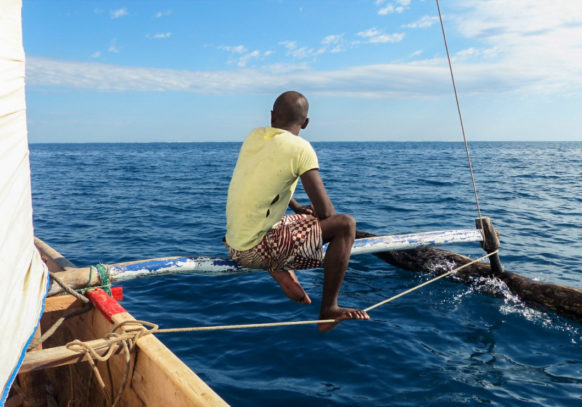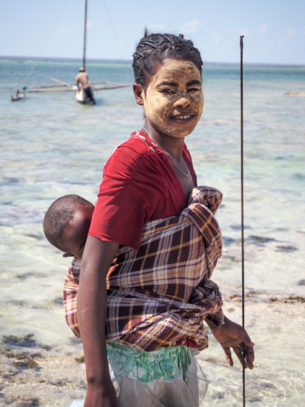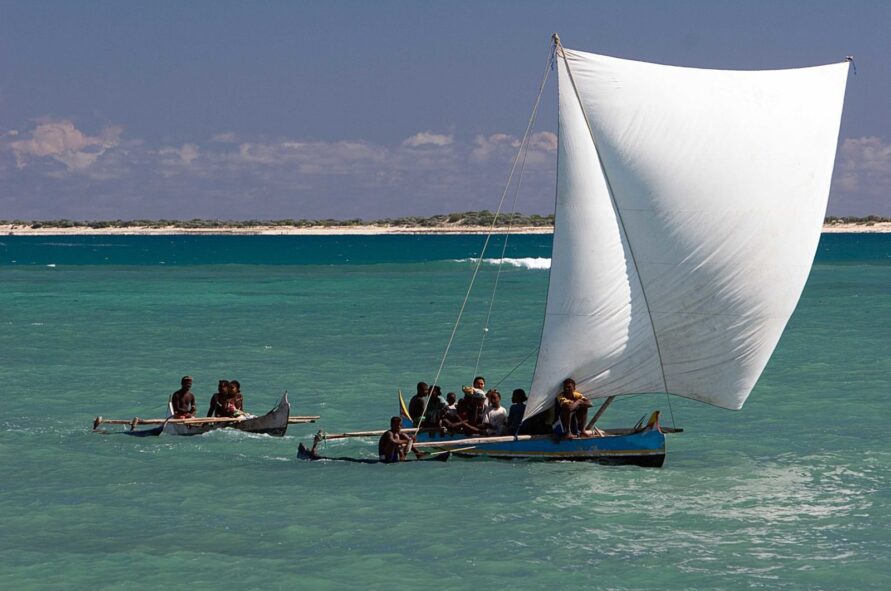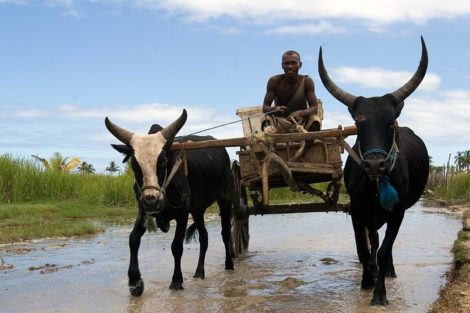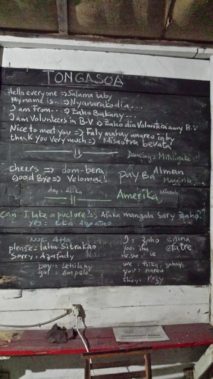Welcome back for the next blog of our Amazing Madagascar series. Don’t forget to check out part 1: unique wildlife if you haven’t seen it yet!
Now on to part 2, and a glimpse into the intrigues of Malagasy culture…
Did you know? The first settlers in Madagascar originally sailed there over thousands of miles of ocean from Indonesia, and to this day the Malagasy word for octopus is the same as in parts of Sulawesi!
There are a large number of different ethnic groups in Madagascar, geographically based on old kingdoms that existed before Madagascar’s colonisation. The traditions and locations of the ethnic groups are rather more fluid today than they used to be, but a strong cultural identity still remains for a lot Malagasy people.
In the southwestern village of Andavadoaka, where Blue Ventures’ marine conservation expeditions are based, the Vezo people maintain the strong relationship with the sea that they are known for, sailing far and wide in dugout sailing canoes, known as pirogues, that they handle with prodigious skill. The Vezo also subsist largely on their fisheries, which are essential both for their livelihoods, and as a source of protein.
When land-based travel is required, carts pulled by zebu cattle are quite common for short distances, and taxi brousses, usually overflowing with people, livestock, and blasting Malagasy music, are used for longer journeys.
“Dusk” in Malagasy is “Maizim-bava vilany” which literally translated means “Darken the mouth of the cooking pot.”Despite the large number of different ethnic groups, the language of Madagascar, Malagasy, is universal, albeit with some regional dialects. It is a wonderfully rich and poetic language, full of powerful imagery, for example “two or three in the morning” is “misafo helika ny kary” which literally translated means “when the wild cat washes itself”.
This richness does make it a very difficult language to learn for visitors, and basic French is understood almost everywhere, but making the effort to learn certain Malagasy phrases such as “misaotra”, pronounced mis-ow-tr, which means “thank you”, would still be warmly appreciated, especially in more remote areas.
Another universal culture for Malagasy people is their strong belief in the power of their dead ancestors, who they call the razana. They believe that if the razana are remembered by their descendants then they thrive in the spirit world, and this remembrance is demonstrated in a strong cultural respect for the departed, and by following the laws set by the razana, which are known as fady.
A fady is usually something within a community that is taboo or forbidden, but fady can differ between communities, families, and sometimes even siblings! Fady can cover more or less any aspect of day to day life, and often have explanatory stories behind them, for example:
In Andavadoaka, walking through the hole in Andava rock is fady. The story goes that a woman happened to walk through it whilst hunting for octopus at low tide. She was then confronted by an enormous octopus, and was instantly struck mute. She remained mute until she passed away, and since then, it has been forbidden for the villagers to walk through that hole.

The forbidden hole in Andava rock where the enormous octopus is said to have appeared | Photo: Ida Vincent
Wearing gold is also fady because, many years ago, European ships sank off the coast of Madagascar. People from the nearby villages sailed out to the wrecks and took all the gold and riches that they could find, using it to make jewellery. Some time later, a European king sent ships to collect the lost gold, and anyone found wearing gold rings had their fingers cut off!
Some simpler examples include that it is fady to show children under the age of two a mirror, as it’s believed to make them crazy. It is fady to feed dogs directly from a plate, because you don’t know where the dog has been, and because it is thought to result in bad weather. It is also fady to touch people’s hair except in the case of children.
Respectful treatment of the dead extends beyond adhering to fady, and can include calling on your ancestors for permission to break ground before beginning a building project, toasting your ancestors before the reopening of your fishing grounds, and by neither selling the field that belonged to your great grandfather nor changing the crop that grows there.

The village elders in Andavadoaka toast their ancestors with Fanta and rum before the reopening of their octopus fisheries.
Funerals and burials are also hugely important in Malagasy culture, as they mark the transition of the departed into razana. Practices differ between ethnic groups, but often combine expressions of grief and sorrow with those of joy. For example, the funerary ritual tranondonaky, practiced by the Antaisaka people of the southeast, consists of a primary stage where the women weep for the departed followed abruptly by a secondary stage where they dance.
Famadihana, which translates as “the turning of the bones”, is an annual ceremony practiced by the Betsileo and Merina people to pay respect to their ancestors. The bones are removed from the family tombstones, cleaned and are wrapped in a white, cotton sheet and a mat. The bones are then paraded around the tomb by their relatives. Entire families as well as family friends are invited to this ceremony, and it can last up to 7 days.
It is also common practice to see the mpanikily for advice if you lose something important like a zebu or a goat.
The belief in the power of shamans and the supernatural is also important for the Malagasy people. If you need to organise a ceremony such as a wedding, funeral, or circumcision then you need to consult a shaman, or mpanikily, in order to select the best date for the event. It is believed to be bad luck to not consult the mpanikily, and something unfortunate may consequentially happen during the event.
I hope you enjoyed learning a little Malagasy culture as much as I did! Please do tune in for the next instalment of Amazing Madagascar, and a taste of Malagasy cuisine.
Before you go, don’t forget to check out our volunteer expeditions where you can experience Madagascar for yourself whilst contributing to valuable marine research and our community conservation work.
Huge thanks to our Volunteer Liaison Officer in Andavadoaka, Ange ‘Jacks’ Mahagaga, for his contributions to this blog!


